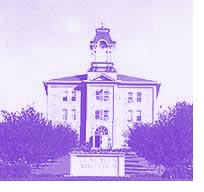![]()
![]() Click on the PDF button to download a PDF version of this Case Study.
Click on the PDF button to download a PDF version of this Case Study.
![]()
Click on the "Get Acrobat" button to download a FREE copy of Acrobat Reader.
Gustavus Adolphus College Uses Coactive’s Technology to Monitor Electricity and Steam Usage
 Background
Background
Gustavus Adolphus, a private liberal arts college located in Minnesota about an hour south of the Twin Cities, was looking to upgrade its physical plant and related energy facilities. Then last spring, in the middle of the planning process, the college was severely damaged by a tornado. The unexpected disaster challenged the facilities staff to press on with their energy improvements despite widespread property damage. Since then, Gustavus has taken some important steps toward preparing itself for deregulation while simultaneously moving forward with its facility repairs and campus expansion programs.
The Challenge
Gustavus Adolphus wanted to be able to monitor and analyze the electricity and steam usage in each of its 28 major campus buildings. But there was only one central electricity meter and one central steam meter for the entire campus. The college needed to sub-meter each of the buildings and bring the data to one central location. The goal was to provide an efficient, centralized monitoring system that would allow the physical plant manager to:
- Detect and pinpoint energy usage anomalies, to be able to correct them and avoid the waste of energy;
- Apply benchmarks for certain types of buildings in order to adopt energy conservation measures; and
- Manage loads to stay under peak consumption thresholds in order to reduce costs.
Future goals included having information tools to shop the deregulated energy market for the best rates.
Gustavus Adolphus needed a solution that would leverage the existing fiber-optic LAN communications infrastructure and would not require extensive new wiring. Specifically, the facilities staff needed a solution that would be effective in a multi-building environment where control points were widely dispersed. They also needed a guarantee of expandability to be able to accommodate additional buildings in the future.
In the execution of its comprehensive upgrade plan, which now included a massive tornado-recovery reconstruction project, Gustavus Adolphus College entrusted cfar, an experienced energy management and system integrator firm based in Kennar, Louisiana, to find the best solution. To provide key technical viability for the project, cfar turned to Coactive Networks, the market leader in providing open solutions for connecting control systems to enterprise networks and the Internet.
The Solution
Coactive Routers were installed at each of the 28 buildings, allowing the existing LonWorks control points to be integrated with the campus-wide local area network (LAN) and ultimately routed to a single host PC console. From this central location, Gustavus Adolphus staff can monitor, analyze, and evaluate real-time energy data and control functioning in all buildings.
Coactive’s Router products, as part of Coactive’s IOConnect Architecture, provide a reliable, embedded, distributed solution to integrating next-generation networking technologies on both the control and data networking sides of the system.
As to its role in this project, cfar design partner Mike Kasmarik says, “Coactive’s connectivity technology provides an excellent means of moving energy management data over an existing Ethernet network. It negates the need to run another network. And it hugely expands the technical viability of an energy management system, making it possible to extend beyond a single building. In fact, it allows you to utilize the Internet, so distance is no longer a factor.”
Future uses of the Gustavus Adolphus system might include use-based billing of individual departments, accepting downloaded variable rate schedules, aggregating power purchases with affiliated colleges, accessing energy pricing/availability information, and even the ability to make on-line power purchases -- all via the Internet, from anywhere on the network.
About Coactive's IOConnect Architecture
The Coactive IOConnect Architecture addresses the convergence of control and enterprise networks with an open, embedded, distributed, and scalable solution based on a coherent approach towards the connectivity problem. The IOConnect Architecture supports open standards including LonWorks, the leading control network technology. It has been specifically designed to support and leverage Internet Protocol (IP) standards and technologies. This approach provides unmatched flexibility, reduces system costs, and enables new functionalities. The technical benefits offered by Coactive’s IOConnect Architecture include:
- Leveraging existing LAN wiring and IP infrastructures in control systems;
- Increasing the return on investment made in the data networking infrastructure;
- Allowing the physical and logical segmenting of large control systems;
- Reducing the total cost of ownership of control and automation systems; and
- Enabling a new class of applications via seamless web and database access to control information.
About Gustavus Adolphus College
Gustavus Adolphus College is a private, four-year, liberal arts college affiliated with the Evangelical Lutheran Church in America. Founded in 1862 by Swedish Lutheran immigrants, the college is named for Swedish King Gustav II Adolf. Fully accredited and well known for its strong writing, science, music, and student community service programs, Gustavus enrolls more than 2,400 full-time students from 42 states and 26 countries. The college is located in St. Peter, Minnesota.
About Coactive Networks
Coactive Networks is a leading provider of open solutions for connecting control systems to enterprise networks and the Internet. The company offers a full line of routers, servers, and gateways for creating powerful next-generation applications, and is the market leader in providing connectivity solutions for LonWorks, the leading control network. Coactive is a privately held corporation based in Sausalito, California. Detailed information on Coactive products, news announcements, seminars, training and support is available on the World Wide Web at http://www.coactive.com.

Coactive, the Coactive Logo, Coactive Connector, Router-LE, Router-LL, and IOConnect are trademarks or registered trademarks of Coactive Networks, Inc. in the US and other countries. LonWorks, LonTalk, and LonMaker are trademarks of Echelon Corporation. All other brands and names are the property of their respective owners.